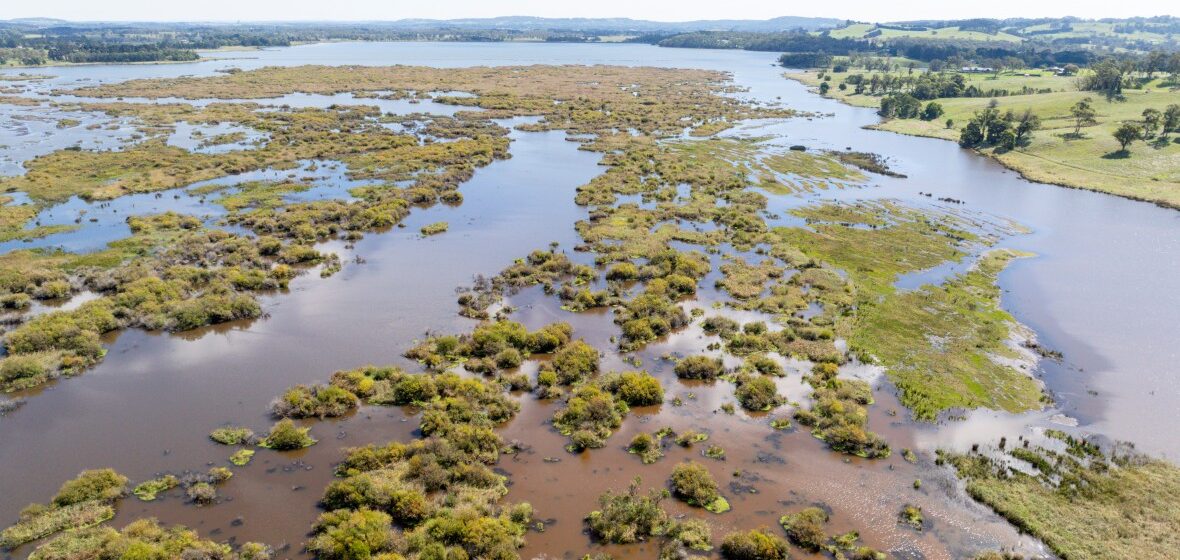NSW's independent water regulator, the Natural Resources Access Regulator (NRAR), is quietly notching up some successes since it was given teeth by the NRAR Act 2017 (NSW).
LSJ Online spoke to the leaders of both the NRAR investigation and prosecution divisions about the powers they have, the role of their organisation in acting on behalf of the public interest, and the recently announced prosecution before Condobolin Local Court.
The NRAR board is appointed by, and given directions by, the NSW Minister for Water. In NSW, non-compliance with water laws can result in a range of responses, from education and voluntary compliance measures through to penalties of $1.1 million for individuals and up to $5 million for corporations, plus possible prison sentences of up to two years.
Further, there are daily penalties imposed for each day an offence continues. In cases where offences are less severe and alleged offenders show a ready attitude to compliance, NRAR typically issues an official caution. Alternatively, breaches that affect the public interest, or where the alleged offenders are averse to compliance, result in a penalty notice (PN), which are available via a public register. Severe breachers may also lead to prosecution in the Land and Environment Court or the local court, enforceable undertakings, imposition of penalties up to five times the value of water taken – or a reduction in the water allocation of a water access licence holder, suspension of any water access licence or approval, and/or requiring an individual or corporation to audit their operations to check compliance with water laws.
Investigations are highly technical
Head of Investigations at NRAR, Lisa Stockley has 23 years of experience in investigations. She says, “NRAR investigations are pretty technical. [In some cases], we use a variety of Spatial Mapping tools to have a look at what is occurring at the property in terms of water use over time. In a recent case, the investigators attended the property, made observations of the pump and meter, and I believe they had discussions with the landholder in regard to what was occurring there. We use WaterNSW and other various records, and we also have statutory powers to issue statutory notices which require people to give us information.”
The approach to investigating suspected breaches of the Water Management Act is adaptable to the circumstances, depending on the severity of the suspected breach, any safety concerns for the public or to NRAR staff, and whether the individual or corporation in question has a history of breaching water laws and compliance requirements.
Stockley says, “Only specific officers that are authorised under the NRAR Act and the Water Management Act are allowed to enter onto the property [where a suspected breach is occurring], and then once they enter onto the property, they have powers to do certain things in terms of collecting evidence. We make a decision about whether or not to inform the [suspected or alleged perpetrator] that we’re coming. Obviously, we have to take into account whether there’s biosecurity measures at the property, or whether there might be safety issues for staff attending unannounced. Generally, if it is a matter where we believe that water has been taken unlawfully, it’s likely that we would attend unannounced in the first instance, then get in touch with the landholder once we’re on the property.”
40 prosecutions in seven years
Since NRAR began in 2018, it has undertaken 41 prosecutions. To do so, the NRAR Board must endorse prosecutions on the basis of independent legal advice. All prosecutions are tabled in their public register. Past cases have resulted from illegal tapping of an irrigation pipeline, using a dam without the necessary approval, illegally building dams near wetlands, unauthorised clearing of vegetation, and illegally pumping water from an endangered ecosystem.
Luke Teo, Director Legal at NRAR, clarifies there have been 28 convictions, plus two matters involving findings of guilt but dismissal without conviction. Three cases have been dismissed, and six have been withdrawn, including one matter that was withdrawn in light of an enforceable undertaking.
Teo says, “NRAR’s Investigation and Enforcement and Legal branches work closely on cases, and in many instances, this collaboration begins early in the process. Investigators may seek advice on legal questions throughout the investigation, or legal review of statutory directions and notices. Investigators also work collaboratively with lawyers when assembling briefs of evidence for prospects advice.”
Regarding the most recent case, he says, “The Condobolin case involves criminal charges, which means NRAR will be required to prove the allegations beyond reasonable doubt.”

Stockley says, “We have a range of enforcement tools that we can use, and we choose the right enforcement tool based the circumstances of the offence that we’re investigating. We have a regulatory policy which guides our regulatory discretion, and we take into account things like environmental harm, the seriousness of the offending, the attitude of the offender towards the offence and towards compliance, what might be in the public interest to do, and their history of compliance. We also have a look at the amount of water taken and how that relates to the water source it is taken from.”
Then, she explains, “ We determine whether or not it would be appropriate to either issue a penalty notice, whether the goal is remediation, and we may issue directions for them to do certain things, or we issue stop work orders. We have the ability to levy charges that can be up to five times the amount of water taken. We can charge people money for that, or we can debit it from their account.”
Alleged breaches of NSW water laws
On 7 May, NRAR announced it had begun a prosecution against a Condobolin region farmer who had breached licence conditions when he allegedly pumped water from Island Creek, a tributary of the Lachlan River, when the meter wasn’t working between April 2022 and March 2024. The farmer faces six charges in Condobolin Local Court, including:
- one count of taking water when the meter was not working
- one count of taking water when the meter was not working, while having reasonable grounds to believe the meter was not working
- three counts of contravening terms and conditions of water access licences
- one count related to failing to supply documents to NRAR investigators in breach of section 340A(1) of the Water Management Act 2000 (NSW).
The potential maximum penalty the Local Court can impose for the offences is $132,000. The matter was listed for first mention on 6 May before Condobolin Local Court.
Stockley says, “the investigation commenced when NRAR received a referral from a WaterNSW Customer Field Officer in July 2023. It is alleged that the matter came to the attention of WaterNSW after the licence holder failed to submit an extension for a faulty meter notification -known as a ‘section 91i notification’ as it relates to section 91i of the Water Management Act 2000.”
When NRAR opts for court, Stockley says it’s a “serious matter”.
“Generally, it’s a matter where the person is very culpable, and it’s a matter where we want both specific and general deterrence. Enforceable undertakings can be taken instead of a prosecution, which is what happened in the case of the Illawarra Coal Holdings investigation [detailed below]. In that case, there was a number of factors taken into account, including the mine’s attitude towards the offending and what they tried to do to address it, and what they were willing to do. The mine proposed the enforceable undertaking, and the fairly substantial contribution that they were willing to make towards a community project was significant. In addition, there was a whole range of other commitments that they made in terms of improving the mine’s compliance and improving the surface water monitoring, plus they’ve committed to a fairly strict regime of compliance reporting to NRAR so that we can monitor what’s happening there quite closely,”
‘Restorative justice’ in $2.9 million Illawarra case
NRAR has just had a big win. Following a multi-year investigation, it has held a mining company accountable for illegally draining millions of litres from Wingecarribee Swamp, which is a vital part of Sydney’s drinkwater catchment. It’s the largest win for NRAR to date (previously their largest EU was valued at $360,000), resulting in compliance measures imposed on Illawarra Coal Holdings Pty Ltd to pay millions towards rehabilitation and the training and employment of workers to undertake this.
This “restorative justice”, as Stockley, puts it, is part of a $2.9 million enforceable undertaking between Illawarra Coal Holdings Pty Ltd and the Natural Resources Access Regulator.

In 2023, NRAR entered an Enforceable Undertaking (EU) worth $2.9 million with South32, the former owner of Illawarra Coal Holdings’ Dendrobium Mine. An investigation found that the mine drained up to 5 megalitres of water a day between 2018 and 2023 without a licence.
The compliance measures agreed to require Illawarra Coal Holdings to fund a three-year program to restore 340 hectares of Wingecarribee Swamp in the NSW Southern Highlands, which is slated for completion in mid-2027.
While the offenders had groundwater licences, they didn’t have surface water licences. Their actions ultimately affected the drinking catchment quality. Illawarra Coal Holdings Pty Ltd was owned by South32 at the time of the breach, before it was sold to mining consortium GM3 in August 2024. Accordingly, NRAR has determined that GM3, as the mine’s current owner, had responsibility for managing “the expenditure of the funds”.
A need for clever resourcing
Though the Illawarra offences occurred between 2018 and 2023, and the investigation took place years ago, the enforceable undertaking was only just finalised.
Stockley says, “That was a painstaking process because of the magnitude and complexity of the [compliance agreement] that’s been undertaken. Obviously, we run a number of matters in a number of different jurisdictions at the same time. We can refer matters to the local court or the Land and Environment Court. Because we also issue these administrative instruments, such as directions or stop work orders, they can be challenged and appealed in the Land and Environment Court as well, so we may also have Class 1 appeal proceedings in relation to administrative actions that we’ve taken [these are environmental planning and protection appeals that are usually heard by a court commissioner].”
Water investigations are technically complex and prolonged.
“[NRAR has] been around for seven years now, so we’ve managed to develop our structure and our resourcing around using the full range of our enforcement tools,” says Stockley. “We have other areas that do proactive work to educate water users or to pick up offences before they become quite serious, and also to get messaging out to the regulated community so that they understand that these things are being monitored and actioned. That’s one way of trying to preserve our resources in investigations and enforcement for the most serious cases.”
She adds that her experience in investigations, including working with NSW Police, has proven “the principles are the same wherever you go. Techniques and evidence collection, and an understanding of how to prepare for administrative action or prosecution, are fundamental and can be applied whatever jurisdiction you’re in. It’s about understanding what the remedies or enforcement options are, then tailoring evidence collection to make sure you get the requisite evidence and use the most appropriate enforcement tool.”
Teo adds that his role is “interesting and challenging. Water is a fascinating area and it’s really rewarding to grapple with the incredible scale of the aquifers and waterways that NRAR regulates, as well as the intricacies of the regulatory scheme and its long history. I particularly enjoy working with the many independent experts briefed in NRAR matters and reading into reports in diverse scientific areas such as spatial analysis, agronomy, geomorphology and hydrology.”




